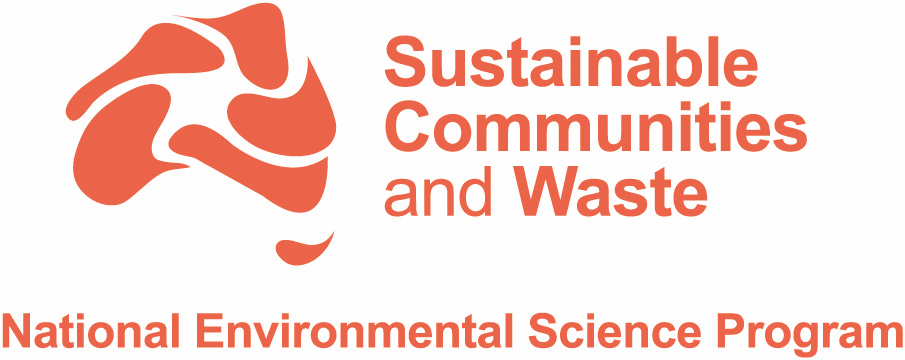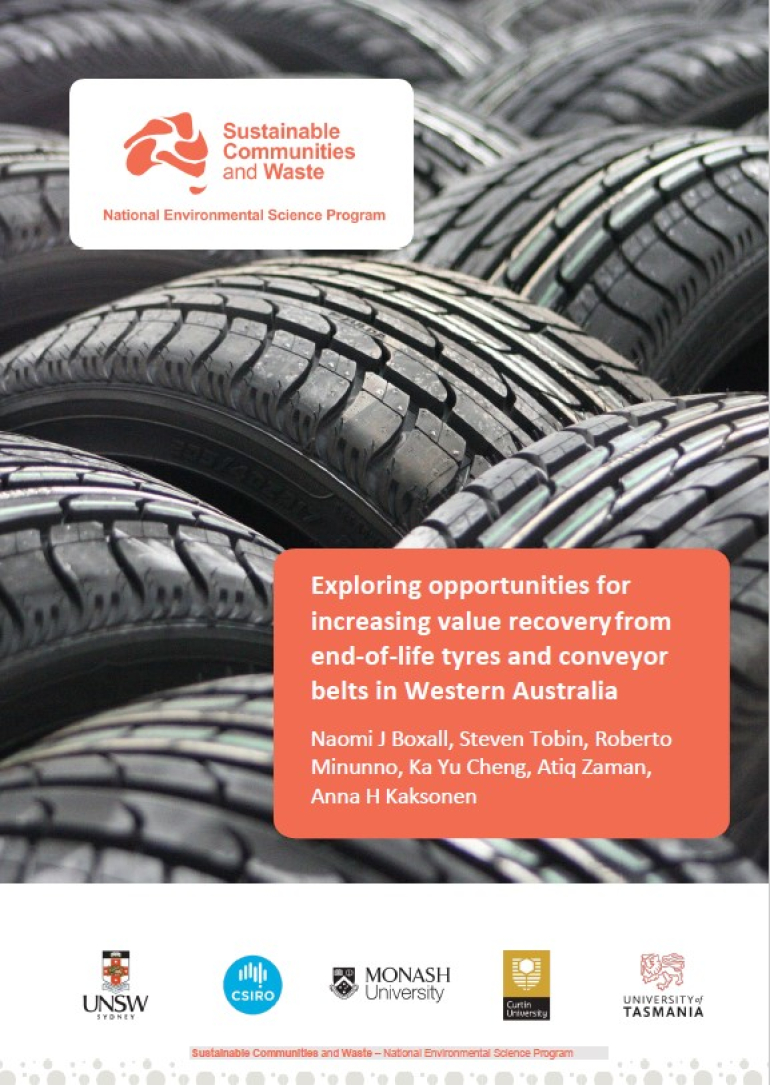The Hub has produced a report that explores circular economy opportunities from waste tyres and conveyor belts in Western Australia.
This detailed report was produced by researchers from the Hub's Impact Priority 5 research area, Cross Hub Waste Initiatives.
The report examines the life cycle of waste tyres and conveyor belts in WA, the environmental, community and cultural impacts of those waste, and makes a series of recommendations for developing market potential for recycled materials produced from EOLT and conveyor belts in WA.
Read the End-of-life Tyres and Conveyor Belts Report
Webpage for Impact Priority 5 research area, Cross Hub Waste Initiatives
The report is also accessible from the Reports page of our Impacts section and via the IP5 webpage under 'impact'.
Report Excerpt:
End-of-life tyre (EOLT) and conveyor belt management in Western Australia (WA) is a challenging and dynamic area of waste management, which disproportionately impacts regional centres, where waste generators have few incentives to manage these wastes for resource recovery.
Improper management of EOLT and conveyor belts can have negative impacts on the associated environmentally and culturally sensitive regions in WA, and more work is required to develop new ways to extend the life of these materials, either through re-treading and repair, or recycling to recover materials that would otherwise be lost permanently from our economy.
As more funding and investment opportunities arise in response to the drivers to meet resource recovery targets, new markets for the reuse of materials recovered from EOLT and conveyor belts need to be developed and enabled.
This can be achieved through the development of appropriate policy and economic levers, evidence-based decision-making, and relevant industry and community engagement to realise the economic potential for the development of WA’s EOLT and conveyor belt industry in regions where these wastes are predominantly generated.
Note:
This project was jointly funded by the Australian Government’s National Environmental Science Program, WA Department of Water and Environmental Regulation (DWER), Waste Authority, Tyre Stewardship Australia (TSA); Commonwealth and Industrial Research Organisation (CSIRO) and Curtin University.

